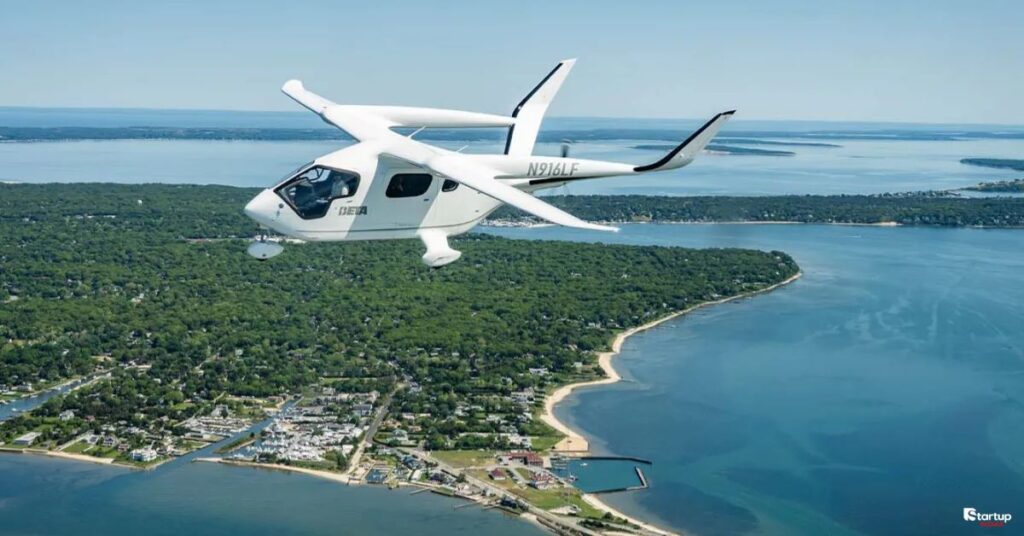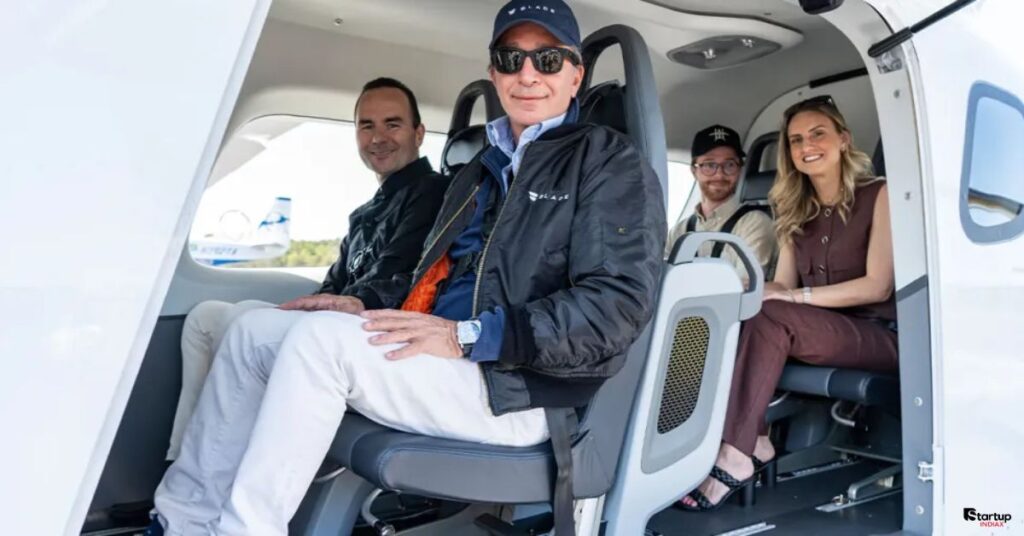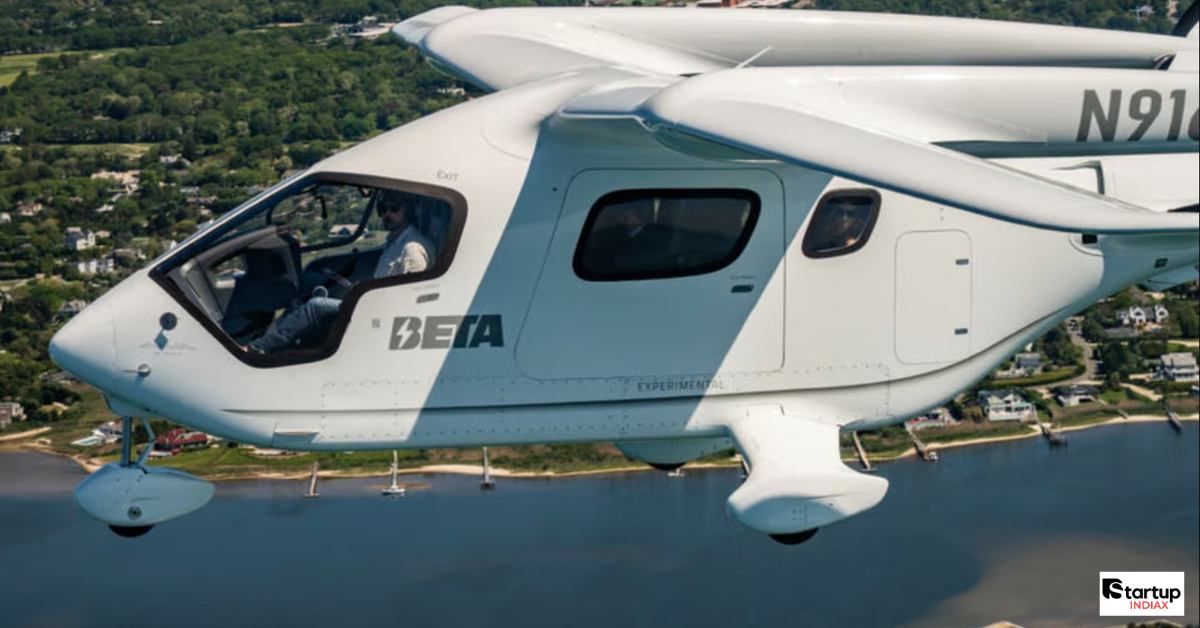Electric CTOL aircraft lands at JFK – a phrase that’s buzzing with excitement as it marks a historic win for sustainable aviation. On June 3, 2025, BETA Technologies’ ALIA CX300, an all-electric conventional takeoff and landing (CTOL) aircraft, carried four passengers from East Hampton to New York’s John F. Kennedy International Airport (JFK) in a 45-minute, zero-emission flight. Costing just $8 in electricity, this first passenger flight of electric aircraft is a bold leap toward greener, quieter, and more affordable air travel. Here at Startup INDIAX, we’re thrilled to unpack this milestone, from the tech behind it to its impact on the future of flight. Let’s dive in!
Table of Contents
Introduction: A Green Victory for Aviation
Picture this: a plane that’s as quiet as a whisper, leaves no carbon footprint, and costs less to fly than a fancy latte. That’s the reality BETA Technologies brought to life when their electric CTOL aircraft landed at JFK on June 3, 2025. This wasn’t just a flight; it was a celebration of innovation, sustainability, and the future of aviation. The first passenger flight of electric CTOL aircraft touched down at one of the world’s busiest airports, proving that eco-friendly air travel is no longer a pipe dream.

At Startup INDIAX, we live for stories like this – startups pushing boundaries to solve big problems. With aviation contributing roughly 2% of global CO2 emissions, electric CTOL aircraft like the ALIA CX300 could redefine how we soar through the skies. Let’s break down what happened, why it’s a big deal, and what’s coming next.
The Milestone Moment: Electric CTOL Aircraft Lands at JFK
On a sunny morning in June 2025, BETA Technologies’ ALIA CX300 took off from East Hampton Airport, carrying a pilot and four passengers, including Republic Airways President Matt Koscal and Blade Air Mobility CEO Rob Wiesenthal. The 45-minute flight covered about 70 nautical miles, landing at JFK at 11:13 a.m. What makes this CTOL aircraft landing at JFK so special? It’s the first time a battery-powered, passenger-carrying plane graced a major U.S. commercial airport.

This wasn’t a stunt – it was part of the Port Authority of New York and New Jersey’s push to test next-generation, low-emission aircraft. The ALIA CX300, powered by just $8 of electricity, showed the world that electric aviation is practical and ready to scale. “This is a victory for the planet and for progress,” said BETA’s founder and CEO, Kyle Clark. The passengers? They were all smiles, celebrating a flight that felt like history in the making.
Why This Flight Is a Game-Changer for Sustainable Aviation
The first passenger flight of electric CTOL aircraft isn’t just a feel-good story – it’s a turning point for the aviation industry. Here’s why this milestone has everyone at Startup INDIAX buzzing:
- Zero Emissions: Unlike traditional jets, electric CTOL aircraft produce no operational emissions, aligning with the Port Authority’s net-zero goal by 2050.
- Whisper-Quiet Flights: The ALIA CX300 is up to ten times quieter than helicopters, tackling noise pollution in cities like New York.
- Affordable Operations: At $8 for a 45-minute flight, electric aviation slashes fuel costs, potentially making regional travel cheaper.
- Urban Air Mobility: Short-hop flights like this could ease traffic congestion, offering a greener alternative for city-to-city travel.
This flight proves that sustainable aviation is here, and startups like BETA are leading the charge. It’s a reminder that innovation can make a real difference, something we love highlighting at Startup INDIAX.
Inside BETA’s ALIA CX300: The Tech Powering the Flight
What makes the electric CTOL aircraft tick? The ALIA CX300 is the conventional takeoff and landing sibling of BETA’s ALIA A250, an electric vertical takeoff and landing (eVTOL) model. Here’s a peek under the hood:
- Electric Motor: A H500A electric motor with a five-blade pusher propeller delivers efficient, smooth performance.
- Battery Power: With a range of over 250 nautical miles on a one-hour recharge, it’s ideal for regional routes.
- Payload: It can carry a pilot plus up to five passengers or 1,250 pounds of cargo, making it versatile for passengers, medical deliveries, or freight.
- Proven Reliability: The ALIA CX300 has flown over 8,000 nautical miles, including a U.S. coast-to-coast tour, and holds an FAA market survey certificate for demo flights.
BETA’s commitment to safety and scalability shines through. They’ve already built 46 charging stations across the U.S., with 50 more planned, ensuring the infrastructure supports this green revolution.
Who Made It Happen? Key Players Behind the Victory
The first passenger flight of electric CTOL aircraft was a team effort, bringing together innovators, regulators, and industry leaders:
- BETA Technologies: Since 2017, this Vermont-based startup has raised over $1 billion to develop electric aircraft. The ALIA series started as an organ transport solution for United Therapeutics, showing its real-world potential.
- Port Authority of New York and New Jersey: Their 2023 innovation challenge invited companies to demo eco-friendly aircraft, and BETA delivered.
- Blade Air Mobility: CEO Rob Wiesenthal, a passenger on the flight, called it “a game-changer for quiet, green travel.” Blade has ordered up to 20 ALIA-250 eVTOLs.
- Republic Airways: President Matt Koscal’s presence signals interest from traditional airlines in electric aviation.
These partnerships give BETA’s work credibility and momentum, a key focus for Startup INDIAX when we cover industry-shaping tech.
Environmental and Economic Wins of Electric CTOL Aircraft
The electric CTOL aircraft landing at JFK is a win for both the planet and the economy. Let’s break it down:
- Environmental Gains: Zero-emission flights reduce aviation’s carbon footprint, and quieter operations improve life near airports.
- Economic Upsides: Lower fuel costs could democratize air travel. BETA’s charging network creates jobs, and its Vermont facility boosts local economies.
- Challenges to Scale: Full FAA certification (slated for 2026), expanded infrastructure, and public trust are needed to go mainstream.
For startups following Startup INDIAX, BETA’s story shows how to balance vision with execution. Their focus on infrastructure and real-world testing is a masterclass in scaling innovation.
Conclusion: Celebrating a Bright Future for Green Flight
The electric CTOL aircraft landing at JFK is a triumph worth celebrating. BETA Technologies’ ALIA CX300 proves that aviation can be sustainable, affordable, and quiet. With visionary partners and cutting-edge technology, they’re rewriting the rules of flight. This isn’t just a win for BETA – it’s a victory for anyone who cares about a cleaner planet.
Here at Startup INDIAX, we’re pumped to see where this tech takes us next. From cargo runs to regional hops, electric CTOL aircraft are ready to take off. What do you think about this green milestone? Share your thoughts below, and stick with us for more startup stories that inspire!

